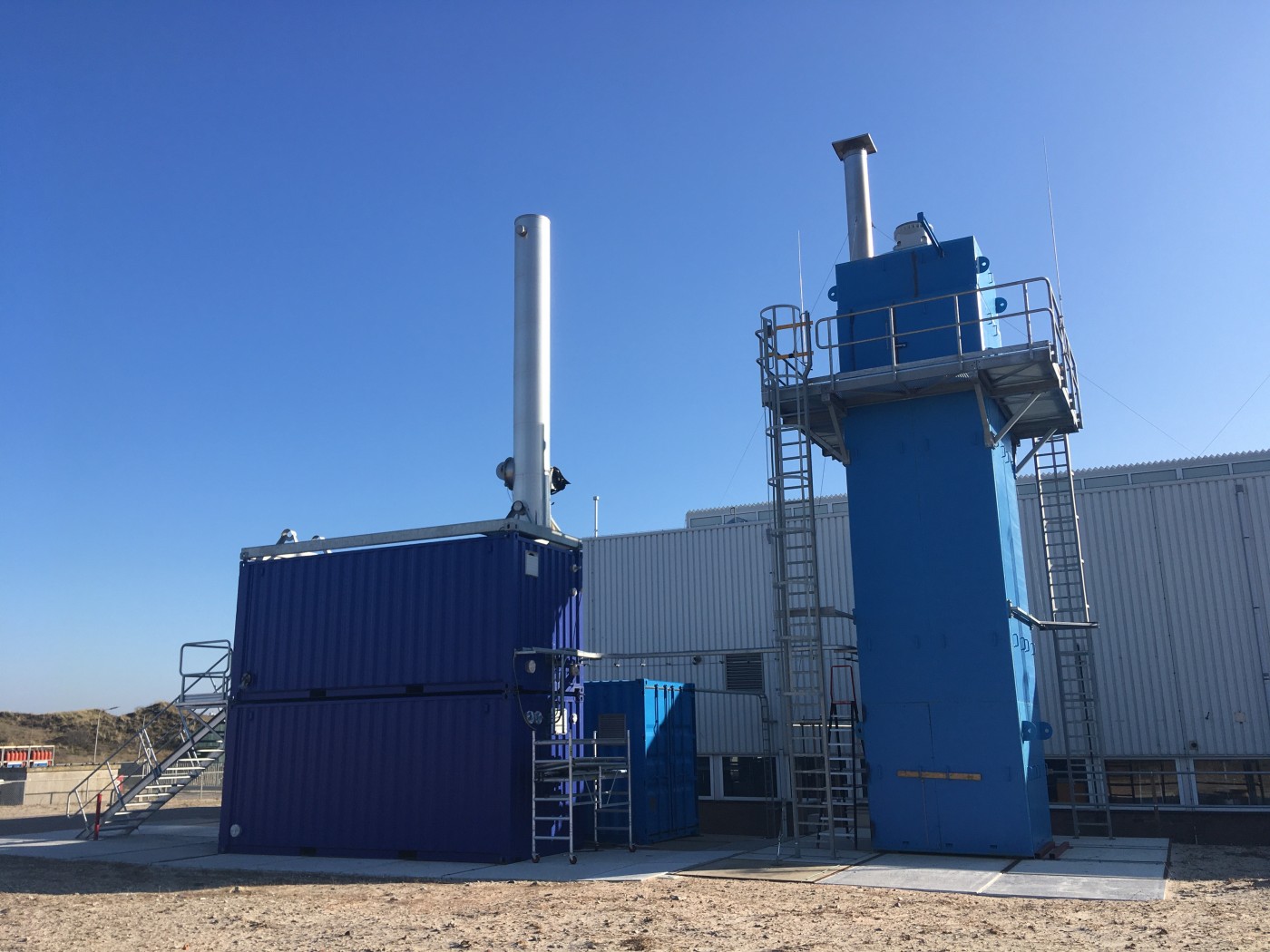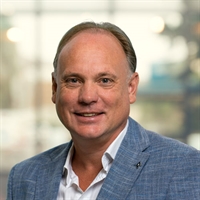

SEDMES: Crucial technology for sustainable synthesis of dimethyl ether from CO2
01-06-2022

Three sturdy containers on the TNO site in Petten are the tangible result of twenty years of development on sorption enhanced synthesis technology. The development of SEDMES started in the lab, moved to the process hall and has now been scaled up to a capacity of three kilograms of DME per hour. For Jurriaan Boon, the installation marks the step towards real industrial relevance. "The technology is ready, and so is the market", he says. "For a long time, there was little enthusiasm for new technology. That has definitely changed since the Paris climate agreement in 2015. Because of taxation of CO2 emissions, but also because of a discussion about the license to operate: is the traditional way of producing still accepted in today's society? As a result, these days there's a real interest in sustainable process innovation and that presents an opportunity for advanced reactor concepts such as SEDMES. That's why I'm so pleased with the new unit: it shows what's really possible."
Equilibrium reactions
The essence of SEDMES lies in its sorption enhanced technology. This involves the simultaneous conversion of starting materials as well as the removal of one of the reaction products. "We introduce a catalyst as well as a solid adsorbent into the reactor, "explains Dr. Boon. "This provides the advantage of process integration: two processes steps are combined into one. But there is also a more fundamental chemical advantage if you are dealing with an equilibrium reaction. Which is often the case with CO2 conversion."
Equilibrium reactions involve reversible chemical conversions: starting materials react to form products, but those reaction products are also converted back to the starting materials. An equilibrium is established in which all substances are present in a fixed ratio. In the synthesis of DME from CO2 and H2, the equilibrium is such that there's usually only 20% conversion into DME. "You have to pull a range of process technology tricks to get an acceptable yield," says Dr. Boon. "In the end that's quite inefficient." The sorption enhanced technology involves selectively removing one of the reaction products from the reaction mixture. This reduces the retro-conversion back to the starting materials and a new equilibrium sets in with much larger amounts of the desired product. In SEDMES, the adsorbent captures water vapor and as a result the conversion to DME can increase to 80% or more in a single process step.
Tough regeneration
While the concept might seem simple, practice is always stubborn. A suitable adsorbent had to be found to selectively absorb water, even at high pressure and temperature. The next step was to devise a procedure to 'dry' the adsorbent so that it could be reused. "That regeneration step is actually the Achilles' heel of all sorption enhanced processes," says Dr. Boon. "The better your adsorbent performs in the process, the harder it is to release the absorbed substance during regeneration." The challenge in overall process development of SEDMES therefore was to minimize the time and energy required for regeneration. It now operates with three reactors. One of those is in conversion mode, the other two are in regeneration. Of the latter two, one is always ready in time to take over from the conversion reactor as soon as the adsorbent there is saturated. The regeneration takes place via pressure swing. This is not a complete regeneration - there will always be some water residue in the adsorbent. As a result, the subsequent conversion is not optimal, but according to De. Boon "process-wise this turned out to be the most sensible way. Is has the advantage that it avoids a time- and energy-consuming temperature treatment during regeneration."
Industrial conditions
The TNO team is eager to bring SEDMES to industrial practice and Dr. Boon is quite confident: "We are now around TRL5 which means we have overcome all the major showstoppers." The coming year in Petten, optimal process parameters will be established using pure CO2 and hydrogen. After this test campaign, the containers will move to the Fieldlab Industrial Electrification (FLIE) in Rotterdam to test SEDMES under industrial conditions. The SEDMES unit will be connected to an electrolyser upstream as well as a DME purification system downstream. Dr. Boon is eager to see the effect of the coupled processes. "In the end, innovation is not about a single reactor; it's about establishing feasible process routes." After that, it is a matter of further expansion and scaling up towards commercially relevant installations. Technology companies are already warming up, says Dr. Boon: "For about two or three years now, we have been having serious discussions with EPC companies about SEDMES. There's a growing enthusiasm to have this kind of technology in their portfolio; also because they see that end users are showing more and more interest."
The right expertise
There are many other possibilities for CO2 conversion via sorption enhanced technology, says Dr. Boon. He mentions reverse water gas shift, in which syngas (CO and H2) is produced from CO2 and H2. From there, all kinds of hydrocarbons can be synthesized via Fischer-Tropsch conversion. The challenge is to find the right adsorption parameters to create syngas in an economically sensible way. "You have to go through that optimization process over and over again," says Dr. Boon, "We have become pretty good at that over the years. Moreover, we have the right infrastructure which involves test rigs that are quite different from standard catalyst testing. And models: we have a whole library of simulation tools to calculate and optimize these processes." According to Dr. Boon, TNO stands out in the sorption enhanced conversion field because of its focus on upscaling. "That involves large projects with a substantial investment budget, and TNO has precisely the expertise to make those a success. So if you have a process that could benefit from a sorption enhanced approach, sign up! We have the tools and we know how to tackle the bottlenecks."
Interested in follow-up?
Are you working at a chemical, equipment supply or EPC company and interested follow-up developments in sorption enhanced Power-2-X and CCU technology? Then contact our business development manager Jan-Willem Konemann.
The SEDMES process was developed in collaboration with the Chemical Process Intensification group at Eindhoven University of Technology led by Prof. Martin van Sint Annaland. Many grants were taken advantage of, including the EU Horizon2020 program (FLEDGED project) and the EU Interreg 2Seas program (Electrons-2-Chemicals project). Further funding was obtained from Smartport, the provinces of South Holland and North Holland, and the Ministry of EZK in the framework of the VoltaChem program.

Installation of the new SEDMES unit at TNO in Petten. The light blue tall container contains the tubular reactors for sorption enhanced DME production. The dark blue containers contain the equipment for mixing the feed and analyzing the product gas.
Share this page:
